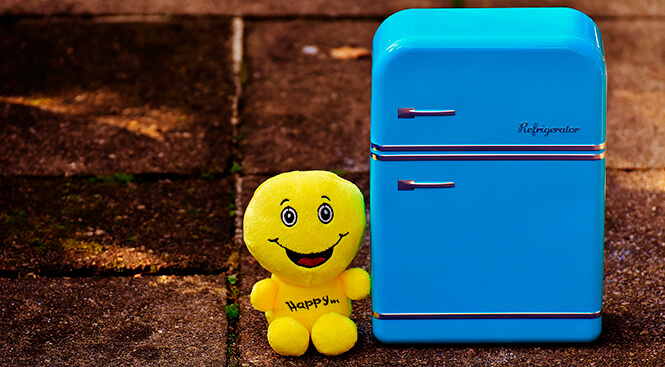6 Tips for Surviving Your Fridge
Your fridge is a 200- to 300-pound behemoth, yet it’s probably one of the most overlooked dangers in your house. There are dozens of ways your refrigerator can harm your family. In any given year, refrigerators are responsible for injuring thousands of kids. About 7,000 of those injuries result in hospitalization each year. Luckily, there are also plenty of ways to protect your family and keep your fridge safe. Here are some of the top safety solutions your refrigerator repair service provider recommends.
Keeps the Shakes from Causing Harm
We never like to think about experiencing “the big one,” but earthquakes are a reality here in California. That’s why trusted refrigerator repair in San Mateo always recommends fridge safety precautions.
-First, have your fridge professionally installed. A refrigerator expert will make sure your fridge is strapped to the wall properly so it can’t tip over. This is important. Even when strapped to your wall, your fridge needs proper clearance from the wall and cabinets for adequate air circulation.
-Check your refrigerator door gaskets periodically. Gaskets that are clean and intact are more likely to hold firm if your fridge does tip over.
-Do not place heavy items on top of your fridge for storage. It can be tempting to view the top of your fridge as potential storage space, especially in the space-constrained Bay Area. Resist that temptation since earthquakes can easily dislodge items on top of your fridge.
Shelving Safety Matters
Most modern refrigerators now use shatter-resistant tempered glass shelves in refrigerators. This ensures that the shelf won’t splinter into large, dangerous shards if you drop and break the shelf. Here are a few more safety tips for shelves:
-Don’t place scalding hot water on glass shelves that are recently removed from the fridge. While tempered glass can take more temperature changes than regular glass, it can still break if the conditions are just right.
-If you have a very deep scratch or crack on the surface of the glass, have your refrigerator repair service in San Mateo order a replacement. Just as a crack in your car’s windshield is a safety concern, so too is a crack in your glass fridge shelf. By federal standards, your glass fridge shelf should be able to withstand 10,000 pounds of weight per square inch. Most fridge experts think your glass won’t break until weight reaches 24,000 pounds per square inch. While it’s unlikely you’re going to put anything in your fridge that’s that heavy, cracks compromise the shelf’s strength. Reduce risk by simply replacing the shelf.
Complete Your Warranty
Sure, most people fill out their fridge warranty form to protect their financial investment. These warranties are also an important safety step. If you’ve registered your fridge with the manufacturer, you’ll be notified of vital safety recalls. If you skip this step, you’ll have to hope you hear about your fridge safety recalls on the news. You can easily remove that uncertainty simply by completing the warranty when you have your fridge installed.
Keeping It Cool
Food-borne illnesses are no joke. Reduce the risk of food poisoning by keeping your fridge below 40 degrees. Stash an inexpensive fridge thermometer in your fridge and check it every week or so to make sure the proper temperature is maintained. If you notice the temperature rising at all, call in the experts. You can easily find a reputable, reliable experts simply by Googling “refrigerator repair service near me.”
It’s a Clean Slate
Believe it or not, you can also reduce your risk of foodborne illnesses by keeping your fridge clean. Wiping up spills as soon as they happen ensures that the spill doesn’t attract mold and bacteria. If spills are tough to remove, take the shelf out of the fridge for cleaning. Place a warm, soapy dishrag over the spill and let it sit for a few minutes. The moisture from the rag should soften the spill enough that you can remove it. For all your shelves and regular maintenance cleaning, use a solution of vinegar and water or warm soapy water. Be sure to clean all those areas that are easy to forget, including:
-Rubber door gaskets
-Underneath the bottom vegetable or meat drawer
-All the drawers
-Door shelves
-Temperature knobs and dials, if you have them
While you’re cleaning your fridge, be sure to wipe down the back interior wall and the ceiling. If you have condenser coils, gently wipe them down or vacuum them. Wipe the floor around the bottom of the fridge and make sure papers and other debris aren’t lodged underneath the fridge.
Don’t Do It Yourself
While many consumers can handle some light appliance repairs, your fridge isn’t a DIY project. Refrigerators contain potentially hazardous coolants that require special handling. Your refrigerator repair service is certified to handle those fluids; you are not.


